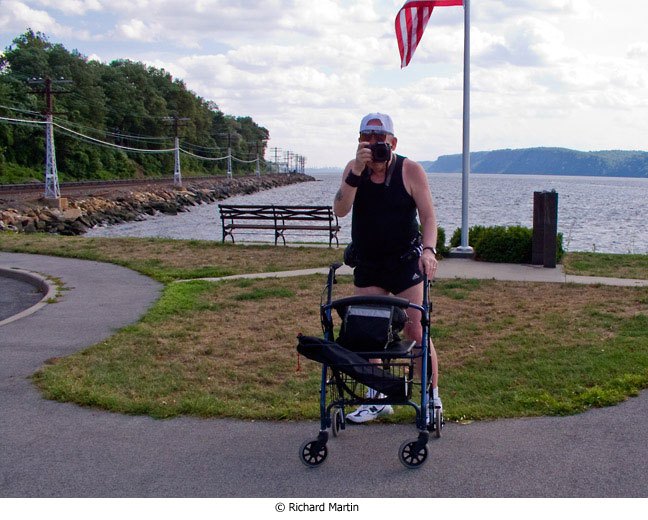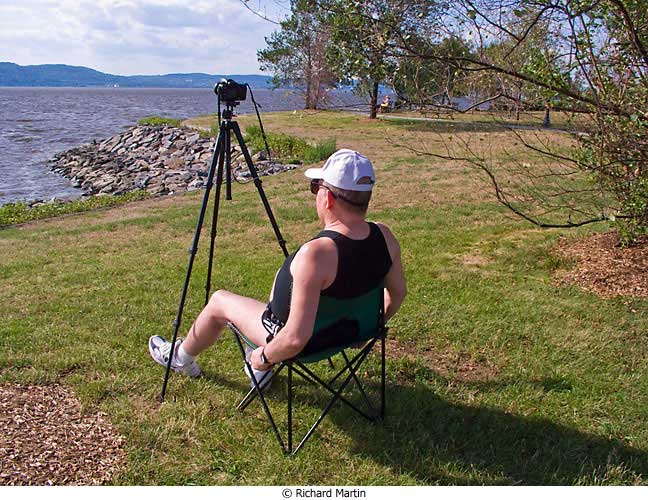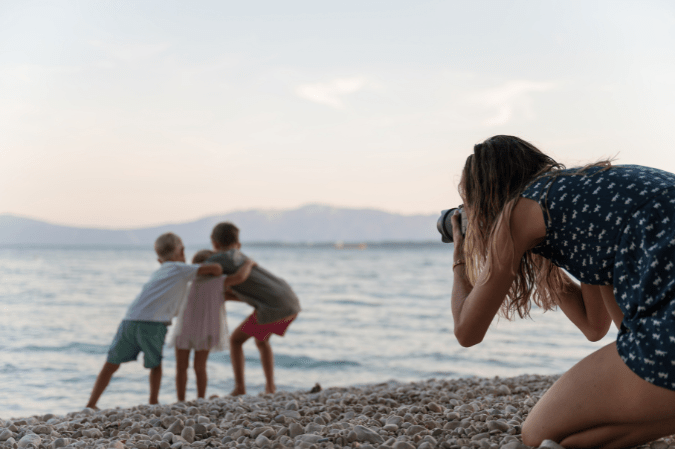I struggled a bit with the title of this article for two reasons. One, I can still walk, albeit with pain but I can still do it. There are lots of folks with more serious conditions than mine and I recall that W. Eugene Smith, a famous photojournalist of the Forty's and Fifties who was seriously injured in the Pacific during World War II endured a lot of pain throughout his career. But pain is pain and how we deal with it is unique with each individual. Two, I don't think of myself as "handicapped" and my chronic back and hip condition does not prevent me from taking pictures, at least while I am sitting down. Of course, some people have no choice sitting down if they are confined to a wheelchair. I can at least stand for brief periods.

Without going into great medical detail, I've had physical therapy, cortisone injections, and currently, sessions with a massage therapist. Of all these, the latter has been the most fruitful in relieving the pain and discomfort. But of course the relief is only temporary. My massage therapist is going to add acupuncture to her treatment regimen (which also includes Reiki) and I look forward to that experience. I'll try anything that enables me to avoid surgery.
Here's a shot of me in "action" with a walker and dressed for hot weather, holding the camera in one hand while grasping the walker with the other. I confess that I seldom use this thing. It does have a nice seat but I find that I'm more comfortable with both hands free to aid balance while I hobble along, the camera hanging from my neck. With the walker, I tend to sort of topple forward even if I am walking upright but leaning a bit on the hand grips. This is especially acute (and scary) when going down a hill. The walker does have double hand brakes but it's still a problem. And it does nothing for the pain while walking.

I mentioned sitting down and here's a shot of my favorite photo accessory — a folding camp chair and I have two of them. One stays in the trunk of the car and the other is usually at home. When I go out of town for a photo shoot, they both go in the car, the extra chair being for my hard-working wife, who functions as my assistant, rep, driver, and everything else. She also helps steady me when I am standing and shooting, either holding me by the waist or grasping my belt. By the way, she took the illustrations in this article with an Olympus C5050. My camp chair gets a lot of use, far more than the walker, and I couldn't work on location without it. And I have no pain while sitting. Yippee!
The tripod in the photo is a Manfrotto 725B "Digi", very light but sturdy enough for the gear I use. It's equipped with a nice ball head and will fit in a suitcase when necessary. The quick-release plate is a real time saver when switching camera bodies, something I often do. I also have a Manfrotto 3021 Pro with a CR2 quick-release ball head and I do take it with me on longer trips like my annual trek to Vermont. But I use that one less and less.
My choice of a particular DSLR model was somewhat influenced by my medical issues. The Pentax K10D which I settled on after much research was relatively light and featured in-camera image stabilization (called Shake Reduction). I needed something I could hand-hold, sometimes with one hand, and still get sharp images. Lenses are the three Pentax "pancakes" — 21mm, 40mm, and 70mm. I'm partial to primes rather than zooms and these lenses are very light and compact. They don't call them "pancakes" for nothing!
So how has my condition affected my photography? Well, no more backpacking or mountain climbing. Those days are gone, probably forever and I do miss those activities. However, most of the locations where I photograph are accessible by car and usually it's a short walk to the spot where I want to position myself for the shots. But suppose I want to get down low in order to emphasize foreground subject matter. That's a problem because I can't really squat as my knees won't take the pressure. However, if I am sitting on my folding camp chair, I can usually sort of scrunch down pretty low. For anything at ground level, though, I need to use a different camera because my Pentax doesn't have "live view" on a flip-up LCD screen (there ARE some accessories that get around this limitation like the Zigview). The "old" Olympus C5050 is so equipped and it takes pretty good pictures considering it's a point & shoot model.
For indoor events, my wife often scouts the place ahead of time to see if there are any chairs available. If not, we take my folding one.
By the way, there is an organization in the United Kingdom called The Disabled Photographers' Society and they list some accessories that some might find useful. They also feature a discussion forum. Here's a link to the Society's home page:
There may be other such resources that I don't know about. If you know of any, please email me at This email address is being protected from spambots. You need JavaScript enabled to view it.. And anyone who would like to share their own experiences with limited mobility can email me at the same address.
Presently, as I write this, I am planning our annual summer trek to Vermont. My project for this trip is to photograph various locations around Lake Champlain, from the north near the Canadian border and south to the Fort Ticonderoga area. As previously indicated, I am confined to locations accessible by car and which are public in nature, like parks and historic sites. But I also plan to take pictures from two ferries that cross the lake.
What else? Well, the motel that we stay at in Burlington has both a heated indoor pool (the outdoor one is way too cold for me) and a hot tub and I find that both help immensely with the pain and stiffness. This is especially important after a long car drive.
The most difficult aspect of all this is more mental rather than physical. I haven't exactly adjusted to this new life. Tai Chi helps to improve my mental state and it does strengthen the legs. Let's just say it's a work in progress.






